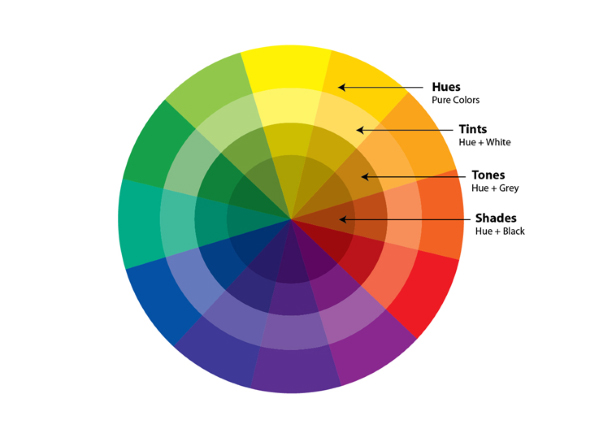The psychology of green
by Admin
Posted on 13-06-2023 09:43 AM

Firstly, we should note that using colour psychology for web design involves considering the colour's vibrancy, that is how dark or
light
it is. The tricky part about vibrancy is that, just like each broad colour has its own properties and connotations, so does each shade. Light green and dark green, for example, can have different effects on the user.
 Below, we'll mention noteworthy differences between a colour's shades and consider their impact on web design. As a general rule, though, brighter shades tend to feel more energetic, while more muted shades feel more relaxing. As a result, brighter shades are often used for calls to action to attract the eye, while more muted shades in backgrounds can help create an immersive effect.
Below, we'll mention noteworthy differences between a colour's shades and consider their impact on web design. As a general rule, though, brighter shades tend to feel more energetic, while more muted shades feel more relaxing. As a result, brighter shades are often used for calls to action to attract the eye, while more muted shades in backgrounds can help create an immersive effect.
Colors have great significance in a cultural sense. For instance, red denotes importance, abruptness, fire, passion, and urgency in our culture. Red demands our attention, and so our eye goes there first before it acknowledges other colors. In indian culture, red symbolizes wealth, power, love, and beauty. In chinese culture, red denotes prosperity and longevity. These are all similar concepts, but not all colors share this inherent connection. In our society of color psychology, blue represents a masculine principle, while in asian culture, it denotes the feminine, and in the middle east, it signifies spirituality and immortality. Green represents luck to the irish.
Color psychology is complicated field of study and goes deep into the meaning of combining colors for a particular desired effect. We will broad brush some basics that may well enough for you to make good color choices for a web site with marketing in mind. Monochromatic color scheme this is the use of a single color in varying shades. This can be a clean and interesting look on a web site. It's soothing and pleasing to the eye especially in the blue or green hues. Complimentary color scheme this is using high contrast of color by selecting colors directly opposite from one another on the color wheel (such as pink and lime green).
Even if you’re a self-confessed design newbie, you’ve likely heard the terms “warm, cool and neutral” tossed around in relation to color. This is referred to as color temperature, and it’s an essential consideration when it comes to color theory. Warm colors contain shades of yellow and red; cool colors have a blue, green, or purple tint; and neutral colors include brown, gray, black, and white. The temperature of a color has a significant impact on our emotional response to it. Within the psychology of colors, for example, warm colors show excitement, optimism, and creativity, whereas cool colors symbolize peace, calmness, and harmony.
The psychology of blue
Color psychology studies how colors can impact human emotions and behavior. Colors can trigger different emotions and feelings, such as happiness.
 Color psychology is based on the idea that color can influence how people think, feel, and behave. Blue is often associated with trust and reliability, while red is associated with passion and urgency.
Color psychology is based on the idea that color can influence how people think, feel, and behave. Blue is often associated with trust and reliability, while red is associated with passion and urgency.
Of course, everyone has its own favorite color. However, using the psychology of color in a right way, you can easily achieve your goals. To help you succeed in web design, i prepared the most good-looking colors that will make people click your website’s link over and over again. Blue. Blue can be defined as a color of reliability, peace, dignity, intelligence, and loyalty. Also, it’s a color of unexplored water and heaven, therefore, people feel something deep and calm in it. Here are some cool facts about blue. 53% of flags have a blue color in the core; it’s a first favorite color of people all over the globe;.